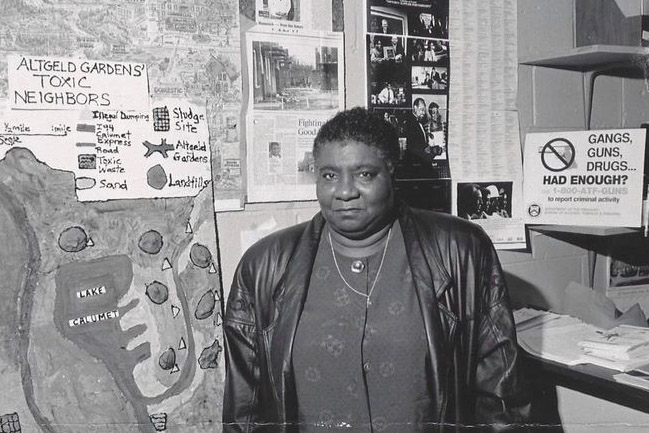Many Voices for Conservation and the Environment: Hazel M. Johnson
 Continuing our series focusing on the contributions of historically under-recognized groups to the conservation and environmental advocacy movement, this month we are highlighting the work of Hazel M. Johnson. Known as “The Mother of Environmental Justice” for her grassroots efforts to combat environmental racism, Johnson was a working-class woman who lived in a housing project managed by the Chicago Housing Authority on the South Side of Chicago for most of her adult life.
Continuing our series focusing on the contributions of historically under-recognized groups to the conservation and environmental advocacy movement, this month we are highlighting the work of Hazel M. Johnson. Known as “The Mother of Environmental Justice” for her grassroots efforts to combat environmental racism, Johnson was a working-class woman who lived in a housing project managed by the Chicago Housing Authority on the South Side of Chicago for most of her adult life.
Ten years after her husband died of lung cancer in 1969, she became aware of the high rate of chronic health problems like respiratory and skin conditions among area residents, including her own children. She realized that these illnesses were likely caused by exposure to toxic fumes from local steel mills, refineries, and chemical companies, asbestos used in the construction of the buildings they lived in, and contaminated drinking water. In addition, the housing project itself was built on top of land that had previously been used as a toxic sludge dump for the Pullman Motor Company. Residents of the area were found to have the highest incidence of cancer in the city of Chicago.
 With information collected by going door-to-door in her community, Johnson began to call on city and state health departments to investigate industrial pollution. In 1982 she founded a nonprofit organization called People for Community Recovery (PCR), which pushed for epidemiological studies of the effects of environmental pollution on area residents. One of the group’s early successes was the introduction of water and sewer lines in the community to replace the well water they had been relying on, which had been found to be contaminated with cyanide and other toxins.
With information collected by going door-to-door in her community, Johnson began to call on city and state health departments to investigate industrial pollution. In 1982 she founded a nonprofit organization called People for Community Recovery (PCR), which pushed for epidemiological studies of the effects of environmental pollution on area residents. One of the group’s early successes was the introduction of water and sewer lines in the community to replace the well water they had been relying on, which had been found to be contaminated with cyanide and other toxins.
Johnson also focused a great deal of her efforts on educating people in her community about the environmental hazards they all faced every day. Her work on environmental justice issues led to national attention, and she was selected to serve on the US Environmental Protection Agency’s newly established National Environmental Justice Advisory Council. In 1994, the work of the council resulted in President Clinton’s Executive Order on Environmental Justice, which directed federal agencies to identify and address the disproportionately high and adverse human health or environmental effects of their actions on minority and low-income populations. The order also directed each agency to develop a strategy for implementing environmental justice.
Hazel M. Johnson passed away in 2011 but her legacy lives on. The People for Community Recovery organization continues the work that Johnson began, and is now run by her daughter Cheryl Johnson.
